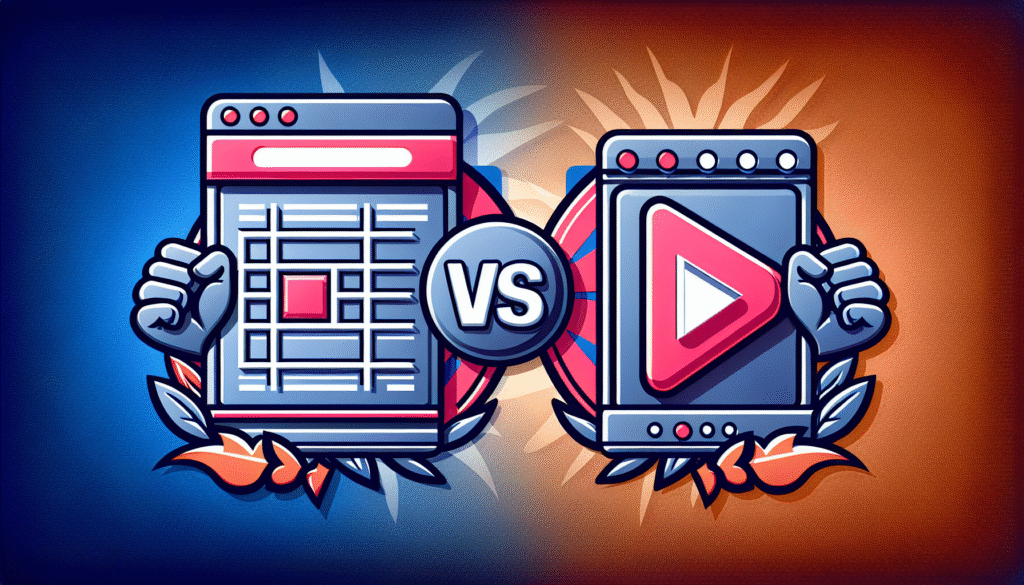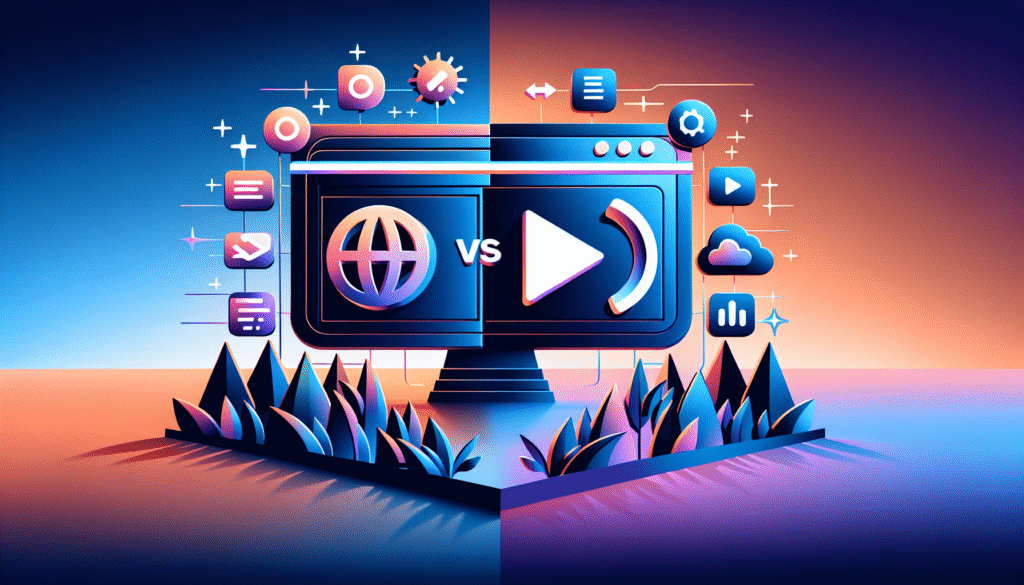Have you ever wondered which is more effective for conversions: a static page or an auto webinar? It’s a question that many of us grapple with when trying to optimize our online marketing strategies. The debate between static pages and auto webinars is more relevant than ever, especially in a digital landscape where every click counts. Both methods have their perks and pitfalls, and choosing between them can feel like picking the right dessert at a buffet—do we want the reliable chocolate cake (our trusty static page) or the exciting new pastry (the dynamic auto webinar)? Fear not, as we embark on this journey to uncover which one stands as the better conversion tool.

Understanding the Basics
Before we jump into the deep end, let’s establish a foundation of what each option entails. We want to ensure everyone is up to speed since we’re all in this learning process together.
What is a Static Page?
A static page is like a well-organized billboard on the web. It’s a webpage that displays the same information for every visitor. Think of it like the menu at your favorite diner—consistent, predictable, and with no surprises. Static pages are often used for landing pages and product showcases, providing specific information in a straightforward way. They do not change unless someone manually updates them, and they’re great for minimalistic, clear-cut purposes.
What is an Auto Webinar?
In contrast, an auto webinar is a recorded presentation broadcasted to an audience at scheduled intervals. Picture it as the charismatic salesperson who can wrap you in a blanket of enthusiasm while giving a product demo. Auto webinars simulate a live experience but are pre-recorded. They’re designed to automatically engage and educate audiences, usually with the goal of converting viewers into customers or leads.
Comparing Static Pages and Auto Webinars
Now that we understand the essence of static pages and auto webinars, it’s time to engage in a more granular comparison. Each has potential, but they serve different roles within the marketing sphere. Understanding these nuances can better equip us to make informed decisions for our strategies.
Conversion Rate: The Heart of the Matter
Conversions are the name of the game. Whether we aim to sell a product, capture an email, or encourage a sign-up, the method that converts more effectively often comes out on top.
Static Page Conversion Techniques
Static pages rely heavily on direct calls to action (CTAs), user testimonials, and clear value propositions. They’re designed to minimize distractions and lead the visitor straight to a specific action. Utilizing SEO techniques, customer reviews, and compelling CTAs, these pages can effectively convert when their focus aligns with visitor intent. Here’s a quick conversion tip table for static pages:
| Element | Purpose |
|---|---|
| Headline | Captures attention with a clear value proposition. |
| Images | Supports textual content with visuals for clarity and appeal. |
| CTAs | Direct users to complete desired actions. |
| Testimonials | Builds trust through past user experiences and endorsements. |
| Limited Distractions | Keeps visitors focused by minimizing optional navigation and distractions. |
Auto Webinar Conversion Strategies
Auto webinars, on the other hand, play the long game. They build rapport and establish authority, often using storytelling and live Q&A simulations. By slipping into the shoes of the audience, they engage viewers on a deeper emotional level. A classic conversion tactic for auto webinars includes email nurturing sequences, personalized offers, and time-limited bonuses.
| Feature | Objective |
|---|---|
| Storytelling | Engages and maintains viewer interest through relatable narratives. |
| Education | Provides value by teaching viewers something new. |
| Interaction Simulations | Creates a dynamic experience mimicking live engagements with polls and Q&A. |
| Urgent Offers | Encourages immediate action with limited-time deals or bonuses to drive conversions. |
| Follow-up Emails | Nurtures leads post-webinar to maintain interest and prompt delayed conversions. |
Pros and Cons List
Sometimes setting decisions into a simple pros and cons table helps visualize potential upsides and downsides more easily. Here’s a perspective on both tools:
| Aspect | Static Page | Auto Webinar |
|---|---|---|
| Pros | Easy to set up, cost-effective, SEO-friendly. | Highly engaging, scalable, mimics live interaction, strong storytelling. |
| Cons | Limited engagement, static user experience, potentially lower conversion. | Complex setup, requires compelling content, potential tech challenges. |

When to Use Each Method
Deciding whether a static page or auto webinar fits best often depends on the goals we aim to achieve. Let’s explore specific scenarios where one may serve better over the other.
Ideal Situations for Static Pages
Static pages are fantastic for fast-loading, straightforward information delivery. If the goal is to provide clear details with minimal user engagement, like on a FAQ or a simple landing page, static pages work efficiently. They’re suited for:
- Straightforward product showcases.
- Purely informational purposes where minimal interaction is needed.
- SEO-focused content that benefits from consistent keyword optimization.
Optimal Circumstances for Auto Webinars
If the aim is to engage viewers over a more extended period and convert them through a narrative-driven experience, auto webinars come into play. They’re perfect when:
- Launching new products requiring demonstrations.
- Initiating a more personal, interactive marketing experience.
- The audience is sought for education, persuasion, or community engagement.
Conclusion: The Winning Conversion Tool
Revealing the “winner” in the static page versus auto webinar showdown isn’t as simple as it seems. Like comparing apples to oranges, each tool thrives in different environments and for different purposes.
Our choice would depend on primary goals: if it’s simplicity and cost-effectiveness, static pages stand out. However, for dynamic engagement and deeper audience interaction, auto webinars lead in conversions. The trick is to know our target audience and tailor experiences accordingly.
In a world where every click potentially leads to a conversion, understanding the mechanics behind our tools enables us to harness them with precision and strategy. May our insights guide you as we navigate the business of conversions with clarity and creativity.
